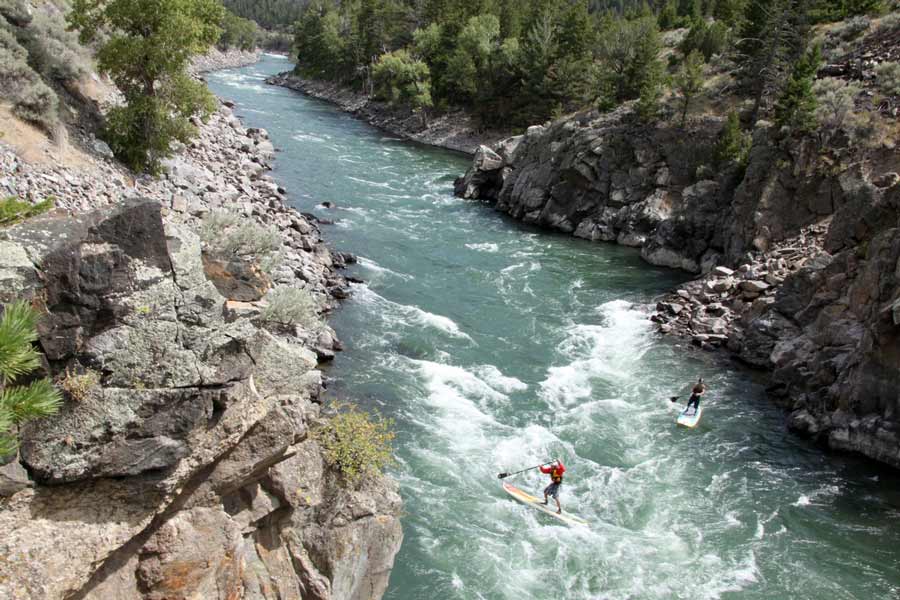
By Ruffin Prevost
MORAN, WYO. — Yellowstone and Grand Teton national parks have long been pitched to tourists as great family vacation destinations. But with fewer families packing up the station wagon for two-week summer trips each year, regional tourism officials are changing their marketing strategies to focus on another kind of visitor: the geotraveler.
An estimated 55 million Americans can be described as geotravelers—people who focus on the cultural, social and educational aspects of travel, placing a premium on authentic experiences in unique places.
“Geotravelers have multifaceted interests and will take in numerous attractions, as long as they are authentic to the culture they are visiting,” said Jeri Duran, head of the Montana Office of Tourism.
Duran and her counterparts from the Wyoming and Idaho tourism offices spoke last week at Jackson Lake Lodge in Grand Teton as part of the 10th Anniversary Conference of the Yellowstone Business Partnership, a group promoting sustainable enterprise in the region.
The conference focused on geotourism as a way to grow the travel and tourism industry in the greater Yellowstone area while protecting the natural resources and rural communities that make the region attractive to visitors.
Geotravelers are an attractive demographic, Duran said, because they are typically well educated, have high incomes and spend a disproportionate amount of their incomes on travel.
“Travel defines them,” she said. “They are frequent leisure travelers, taking trips an average of three times per year.”
Targeting geotravelers has only been a part of Montana’s tourism marketing strategy for the last few years, she said. Before that, the state had a confusing hodgepodge of messages aimed at disparate groups and focused on a disjointed array of destinations, events and attractions.
That all changed when National Geographic teamed up with the Montana Office of Tourism and other regional partners in the state and Canada to promote a detailed mapguide aimed at luring geotravelers to the Crown of the Continent. The region includes Glacier National Park and surrounding mountain areas in Montana, Alberta and British Columbia.
“That project really sparked a complete change in how we did business,” said Duran, who joined the Montana Office of Tourism in 2011, and credited her predecessors with initiating the successful strategy.
Duran said the Crown of the Continent promotion “brought to light for us who our visitors really were, and helped us focus on this emerging audience of the geotraveler.”
Targeting geotravelers allowed Montana to play up its remoteness and isolation as strengths, rather than liabilities, Duran said. The state adopted a new marketing campaign around the catchphrase, “Montana: There’s Nothing Here.”
“It really took a lot of courage to bring that message forward,” she said. “Luckily, it did work.”
The state has since built a travel destination brand centered around three core messages: spectacular and unspoiled nature; vibrant and charming small towns; and breathtaking experiences by day with relaxing hospitality at night.
Because those three messages all appeal to geotravelers and also touch on aspects of life in nearly every corner of Montana, the campaign is “not just about national parks, but allows us to encompass all the rural areas around the state,” Duran said.
Since the Crown of the Continent project, National Geographic rolled out another mapguide and companion website focusing on geotourism in the greater Yellowstone area, partnering again with Montana, but also bringing in Idaho and Wyoming.
That effort has paid off for all three states, which compete for tourism dollars but also benefit from the central draw of Yellowstone, said Karen Ballard, who heads the Idaho Division of Tourism Development.
Idaho has the nation’s third-fastest growing tourism industry, Ballard said, with residents of the Pacific Northwest driving across the state on their way to Yellowstone.
Though tourism pumps $4 billion into Idaho’s economy each year, the state could do much better, and additional funding is needed to help market to geotravelers and others, Ballard said.
In Wyoming, “national parks are the destination drivers of our tourism economy,” said Diane Shober, head of Wyoming Travel and Tourism.
“But once they get here, it’s about having people move beyond the national parks into the gateway communities and even beyond them,” Shober said.
Wyoming has hired actor Robert Duvall to narrate a series of television commercials that will play in major markets this summer as part of a $5.7 million campaign using the phrase “Roam Free,” Shober said.
Following Montana’s lead in focusing on geotravelers, tourism offices in all three states are now marketing their spectacular natural settings, unique experiences and authentic rural communities. As those campaigns continue, geotravelers will be increasingly reminded that the greater Yellowstone area is a must-visit destination—and one worth returning to again and again.
Contact Ruffin Prevost at 307-213-9818 or [email protected].
